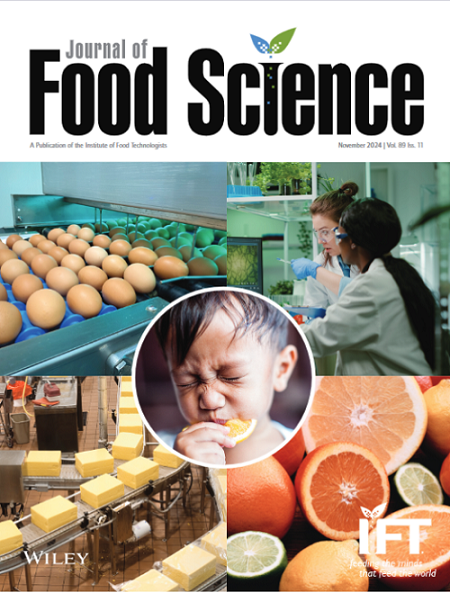Extraction of Valuable Bioactive Compounds From Aronia (Aronia melanocarpa) Fruit and Their Use in the Production of Fast-Dissolving Oral Strips
Abstract
Aronia fruit (Aronia melanocarpa), known for its exceptionally rich bioactive profile and potent antioxidant properties, was used to develop fast-dissolving oral strips. This study optimized the ultrasound-assisted extraction (UAE) of these compounds by evaluating solid-to-solvent (1:20, 1:30, 1:40 g/mL) and extraction times (15, 30, and 45 min). A face-centered central composite design (FCCD) identified the optimal conditions as a 1:30 g/mL solid-to-solvent ratio combined with an extraction time of 17.27 min. Twelve strip formulations were prepared using aronia extract, pullulan, glycerol, and lemon juice, which served as a solvent, acidulant, and potential source of synergistic bioactives. Six successful formulations were characterized (F2, F4, F6, F8, F10, and F12), revealing that higher aronia extract content increased their total phenolic and anthocyanin content and antioxidant activity. The selected formulations exhibited surface pH values ranging from 6.53 to 6.78, thicknesses of 0.522 to 0.821 mm, and disintegration times of 10.25 to 25.55 s. Mechanical properties included tensile strengths ranging from 4.07 to 10.89 MPa and elongation at break values from 32.08% to 50.53%. Scanning electron microscopy revealed a smooth, homogeneous surface, indicating uniform component distribution. This study demonstrates a viable method for creating a novel functional food product that effectively delivers health-promoting compounds in a convenient oral strip format.
Practical Applications
This research demonstrates a novel method for producing fast-dissolving oral strips enriched with bioactive compounds from aronia fruit. These strips could be developed as functional food products or dietary supplements, offering a convenient way to deliver antioxidants to consumers, especially those with dysphagia (difficulty with swallowing), like children and the elderly. The findings provide a pathway for the food industry to create high-value, innovative products from agricultural sources like aronia. Commercialization would require packaging the strips in individual, moisture-proof sachets to ensure stability. Future work should prioritize shelf-life studies and sensory analysis to optimize consumer acceptance.


 求助内容:
求助内容: 应助结果提醒方式:
应助结果提醒方式:


